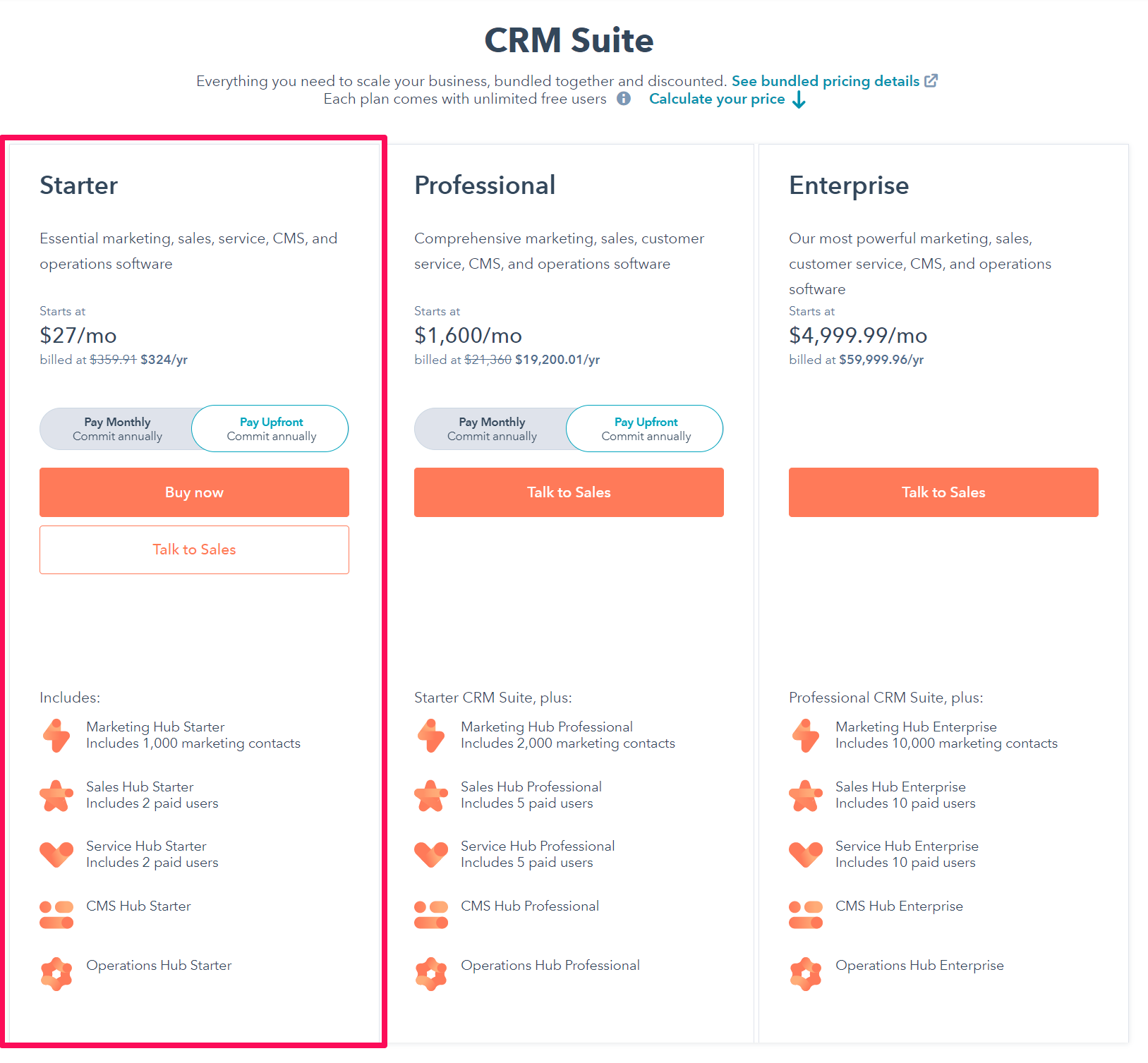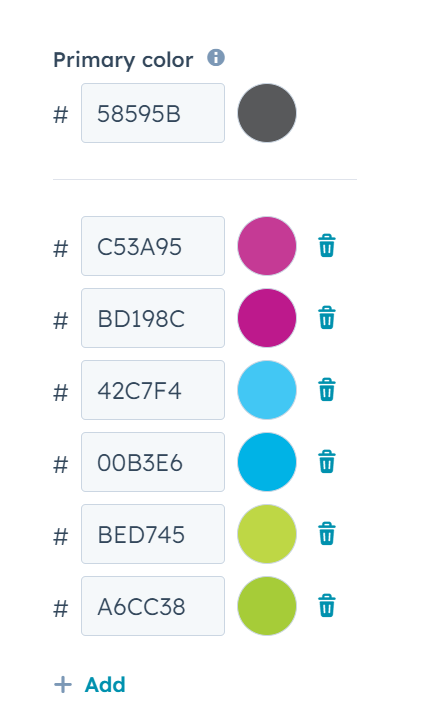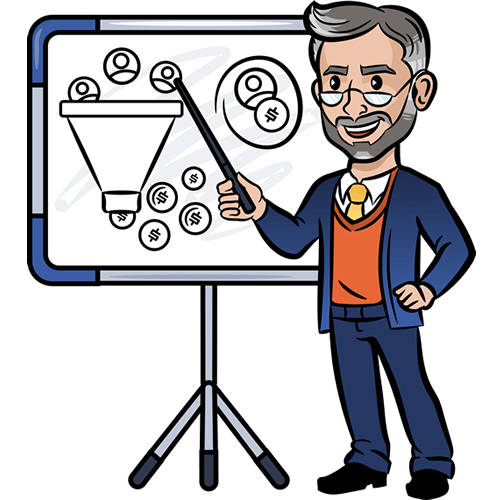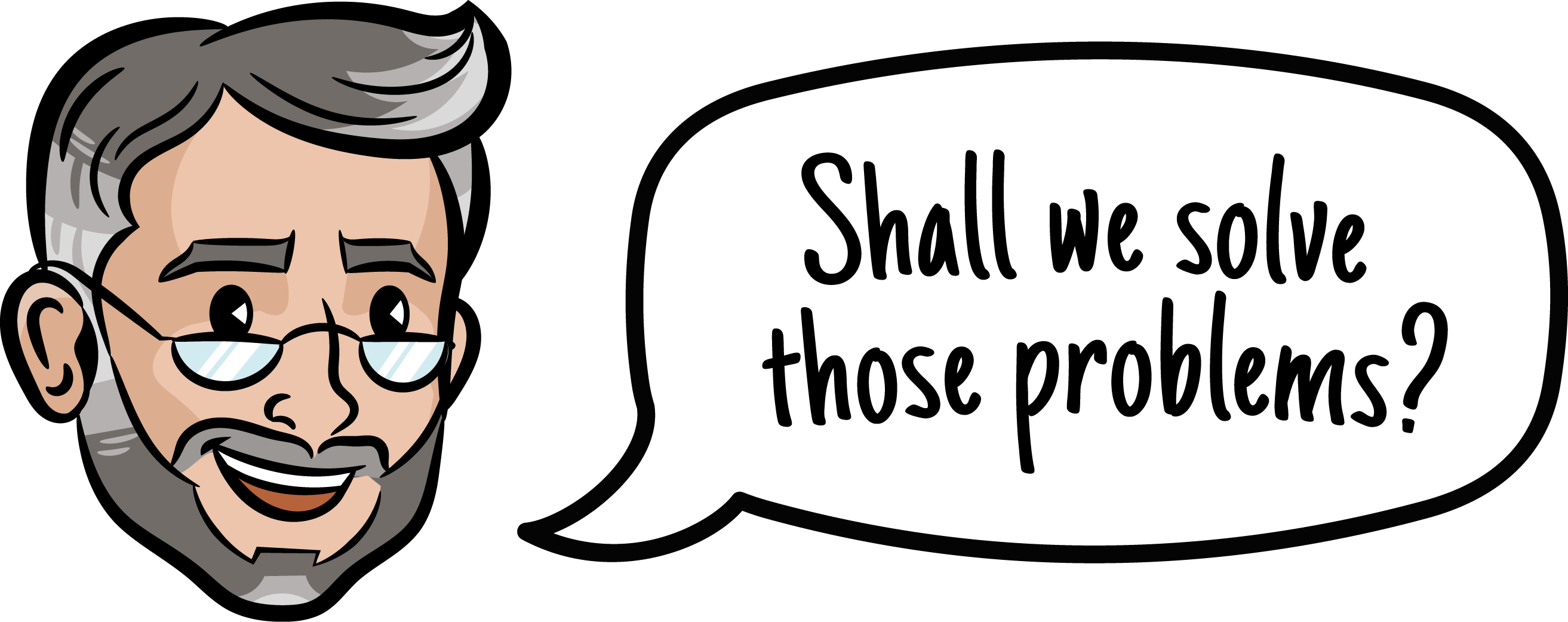Table of Contents
What Is Hubspot?
What’s the Purpose of a CRM?
What Other Services Can Hubspot Provide for Startups?
Is There a Hubspot for Startups Plan?
Can a Solopreneur Benefit from Hubspot?
What Are the Critical Configurations in Hubspot?
So How Do You Implement Hubspot In Your Startup?
How Does Implementing Hubspot for My Startup with Sales Funnel Professor Work?
Can Sales Funnel Professor Help Me Decide if Hubspot Is Right for My Company?
What Is Hubspot?
When I built my first businesses back in the early 2000s, I had no awareness of this emerging class of software called CRM. Keep in mind, cloud software was just starting.

Professor’s Note:
CRM – Customer Relationship Management.
The name is somewhat misleading because it’s really much more about analytics and managing key performance indicators related to both sales and marketing team members.
Customer relationships are often managed more directly via support software, chat software, email, phone, etc. Hubspot has these tools integrated as well.
When I landed in the Atlanta startup scene in 2013, the two CRMs that got a lot of buzz were SalesForce and SugarCRM. I had a friend whose side hustle was building apps to make SugarCRM more powerful.
Then I started to hear about this new tool called Hubspot. It was kind of hard to figure out what it was exactly because they gave away the software and had all these free articles that almost made them look like a marketing agency. Hubspot actually started at MIT back in 2006.
At one point, I was trying to decide what to do next after a failed startup and started a free Hubspot profile. And then I got it…It was a CRM that was using a freemium go-to-market strategy. This approach is now also referred to as PLG or product-led growth.
Conversely, SalesForce is widely known for the opposite. Extremely aggressive sales representatives “pushing product” and trying to lock in long-term, enterprise-price contracts before you get to use the software.
So over the next few years, Hubspot and SalesForce became the two players to dominate the space at least in the startup world. Hubspot continued to build new modules internally while SalesForce relied heavily on connections to other apps in those days, but has gradually shifted to purchasing or building modules that compete with its app store partners.
At present, they have both become more than simply CRMs.
Hubspot is a CRM and also has modules that as standalone software would be called Knowledge Base, Chat, Sales Automation, Marketing Automation, Newsletter, Social Media Management, and Website-Builder/CMS, and provides ample analytics across all of those. When we provide Hubspot audits, we’re looking to see that all of the automation and analytics are properly configured and being used to make the business as scalable as possible.
What’s the Purpose of a CRM?
CRMs are really about organizing data and managing certain types of tasks related to revenue.
They typically have at least 4 “object” types:
- Contacts – Named people, ideally with an email address and title, and notes on all historical contact with that person.
- Companies – Businesses with names, addresses, websites, etc. that are bidirectionally connected to contacts.
- Opportunities/Deals – These are basically opportunities to make money. They connect to companies and the specific contacts at that company that need to be involved to close the business. They typically are grouped by stage, meaning how close the deal is to closing.
- Users – These are the people at your company. They update records, send correspondence, and try to create and close as many deals as they can to bring in revenue. Their activity within the system is tracked, which should correlate to what they are actually doing outside the system to drive business.
Big Picture: CRMs help your sales and marketing teams stay organized, avoid leaving money on the table, provide team accountability, and are a great idea for a non-hobby business.
What Other Services Can Hubspot Provide for Startups?
So if a CRM is a fancy rolodex, what are the other tools that digital companies need to win and service business:
- Individual/One-Off Emailing – Hubspot does not sell branded domains (.coms, .nets., etc.) but integrates to send emails via your company’s domain from within a single Hubspot contact record. It also has a Chrome extension that allows you to access your Hubspot contacts from within Gmail and have your emails that originated in Gmail automatically tracked to the Hubspot contact.
- Newsletter Emailing – Hubspot has its own drag & drop, branded HTML newsletter builder. If you’ve used Mailchimp, you’ll find it very similar.
- Support Ticketing – If your company provides a software or service where someone is trying to do something on their own, they may occasionally get stuck and need help. Ticketing software allows you to track these issues to resolution and run analytics to see how your clients’ need for support is trending.
- Knowledge Base – Another tool for companies that provide a product used by clients, Hubspot provides a way to build out indexed, categorized “How To” articles with an easy search function.
- Website – Hubspot has its own content management system that allows you to build landing pages or your whole website if desired. It also integrates with WordPress.
- Chat – Being able to answer sales questions or support questions via chat is a great way to increase your sales and retention. Hubspot’s chat also allows you to create automated responses that are page specific.
- Scheduling – Hubspot integrates with the major online calendar providers and provides you with a link that allows someone to book an available slot on your calendar automatically. Think Calendly. You can also embed Hubspot’s calendar widget in a website.
- Forms – Creating custom forms allows customers to submit text answers, documents, and more either in an unbranded form or integrated with your website.
- Sales Automation – If you’ve used SalesLoft, you’ll understand what Hubspot’s sequences are. You set up a series of touches (emails, tasks to call, connect on LinkedIn, etc.) and apply that series to a list of target clients. Hubspot automatically sends the emails (that appear to be one-offs) on the schedule you set and gives you the task if you’re supposed to call that day.
- Marketing Automation – Hubspot automated emails go out as follow-upss on a schedule after a form submission, a chat, or something happens in your app.
- Analytics – Hubspot cookies visitors when they touch your website, app, etc., and automatically creates a log of their activity with your digital footprint. In the aggregate, it provides reports and dashboards that allow you to track all kinds of trends: sales, marketing, support, etc.
So think of Hubspot as much more than a CRM even if you’re using the free plan.
Is There a Hubspot for Startups Plan?
Unlike many of their competitors that really seek enterprise-sized companies, Hubspot is very friendly to startups, even solopreneurs.
The free plan allows you to have a database of your clients, companies, and deals, send one-off and branded emails, expose a simple scheduler, add chat to your website, and many more sub-features.
The drawbacks of the free plan are:
- Hubspot Branding – Hubspot’s logo and branding are present at the bottom of your one-off emails, within your chat, at the bottom of your newsletter, etc.
- Low Limits – You need to be a simple company to stay on the free plan. You get 5 total email templates, one pipeline, limited reporting customization, limited chat automation,
- No Advanced Modules – You don’t get access to workflows, sequences, the social scheduler, the knowledge base, feedback surveys, the customer portal, integrated payments, playbooks, and other advanced tools.
If you’re feeling confident about your startup, you probably want to get rid of the Hubspot branding and start using more advanced features.
You’ll pay fees, but if your monthly Hubspot payment is less than the hours and missed revenue you might be experiencing, it’s probably a wise investment.
Hubspot’s pricing is a bit confusing but your next tier up from free options are:
The CRM Suite Starter Bundle
This plan removes the Hubspot branding and gives you upgrades across the core modules and includes two starter sales seats and two starter support seats.

Individual Hubs
If your company doesn’t need support ticketing, for example, starting with a cross-module bundle might not make sense.
If your primary mode of selling is through salespeople doing targetted outreach (ABM approach), you might simply start with the Starter (2 seats) or Professional (5 seats) Sales Hub plans.
If you’re an e-commerce store, your website does the selling. You need to be focused on getting people there en masse. The Starter or Professional Marketing Hub packages are probably what you want. Any version of Hubspot syncs with Shopify.
Custom Package
If you already have a team divided across job functions and decent traction, you’re probably ready for a custom package.
In this arena, Hubspot will work with you similar to other “Enterprise” competitors. Salespeople are authorized to cut deals, the end of the quarter matters, etc.
In one of our more complex Hubspot implementations, we connected and streamlined processes for 6 teams working within Hubspot primarily (inside sales, business development, marketing, support, implementation, and revops) and built a bi-directional connection with the primary software work management platform (Jira), where developers, QA, and product teams primarily worked.
For the cost of one individual-contributor level US hire, you can have tons of business automation if configured properly.
Can a Solopreneur Benefit from Hubspot?
Absolutely. No one wants to leave money on the table, and having all client info and potential revenue literally at your fingertips is hugely beneficial.
The mobile apps (iOS & Android) are quite powerful on any version and give users the ability to:
- Look up any client contact info
- Important data from a business card (optical character recognition)
- Initiate tracked emails
- Have a chat conversation (client is on your website)
- Watch as e-commerce purchases role in
- Respond to support tickets
For a solopreneur, the free plan is a great place to start and the paid plans probably make sense to implement before even making a first hire. Hubspot works 24/7, after all.
What Are the Critical Configurations in Hubspot?
CRM – Everyone needs their existing rolodex imported. Cleaning up that data before importing contacts, companies, and deals in mass is a good thing. It’s generally easier to bulk edit in a spreadsheet prior to import.
Then Hubspot supports field-mapping to import that CSV or XLSX file and populate.
Email – Much of the magic of Hubspot is its all-in-one nature, which means you’ll want to be sure to connect your newsletter email address.
If you’re using Sales Hub, you’ll want each salesperson to sync their individual email address.
If you’re using Service Hub, you probably want to sync your default service email: support@yourcompany.com, for example.
Branding – Hubspot allows you to import logos, sales collateral (as PDFs), set your default font, & more.

You’ll want to set your default color palette when you get started.
You’ll then have access to that palette when you’re working on branded emails and landing pages.
Integrations – Like many modern software platforms, Hubspot has an app store with tons of connections available.
Many of these connections are free and developed by Hubspot. They aren’t standalone Hubs but rather smaller connections between different platforms that help with further automation.
Others are developed by 3rd parties who do charge for their use.

Even free Hubspot users can see the marketplace and start planning how they want to build the rest of their sales and marketing stack before upgrading. Free users can connect most integrations. The ones that won’t work have dependencies on the upgraded Hubs.
Some very common connections to Hubspot:
- Gmail (personal and Google for business)
- Other email
- Google calendar
- WordPress
- Jira
- DVR Software
- Various click-to-call/VOIP solutions
- Facebook Ads
- Facebook Pages (respond to messages through Hubspot)
- Google Ads
So How Do You Implement Hubspot In Your Startup?
Out of the box, Hubspot attempts to gamify each Hub. It will walk you through the surface level and help you with basic tasks.
If you’re an app ninja, you may be able to figure out the rest of the platform.
Hubspot has a large resource library and community board as well where you can find answers to more obscure questions.
If you want a sophisticated implementation such as direct connectivity with your SaaS platform or to have your Hubspot CRM talk bi-directionally with a partner’s CRM, those tasks are possible but require thorough documentation and developer resources.
Hubspot does have many APIs available.
If you’re not very techy or want to implement fast, Sales Funnel Professor provides Hubspot implementation and more importantly, training along the way.

How Does Implementing Hubspot for My Startup with Sales Funnel Professor Work?
The steps to implement Hubspot are pretty straightforward. Like we do when we work with firms who need help with websites, the last thing we want to do is leave you with a “black box” where you can’t accomplish your work quickly.
This is the general process:
- FREE: Discuss your business and your go-to-market channels
- FREE: Document the scope of work
- Share a Trello board with you (your homework and training materials)
- Gather existing data from other systems
- Import data
- Configure the desired Hubs
- Train your team on the tools and new, more efficient processes that are now possible
For smaller projects, we can finish within a week. For larger firms who want to use lots of tools as they get comfortable with the first set, we typically keep an open contract and schedule training at convenient times.
Can Sales Funnel Professor Help Me Decide if Hubspot Is Right for My Company?
Yes, we provide 30 minutes of free consulting to all potential clients. If we don’t think Hubspot is the right fit for you, we’re happy to discuss SalesForce and other solutions, both bigger and smaller.
If you already have a CRM, whether it’s Hubspot or a collection of other apps, we also audit sales and marketing stacks for lost revenue, training gaps, and missed opportunities in marketing automation, sales automation, and automated reporting.
For Further Reading: Twitter After 5 months of Elon Musk… What Have We Learned?


